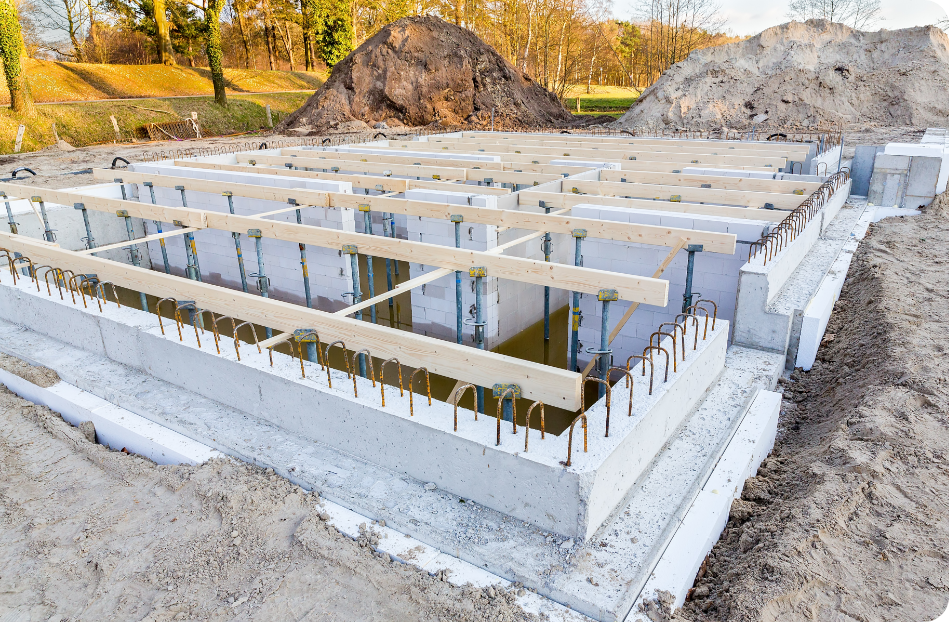Foundation issues are common during winter, especially if the climate includes a freeze/frost cycle where the temperatures rise and fall regularly. With some due diligence, you can keep the foundations on your builds safe and structurally sound. Here’s what you need to know to avoid freeze/thaw-related structural issues in the foundations of your builds.
Understanding Frost Heaving
The freeze/thaw cycle is problematic for foundations because of frost heaving, which occurs when soil freezes and thaws.
When soil freezes, the water contained in it expands. Therefore, the soil also expands with the water. When soil thaws it ultimately ends up moving and shifting, which puts pressure on the foundation. This can lead to instability, cracks, moisture issues, and even considerable movement of the home.
How to Avoid the Dangers of Frost Heaving
If you know that a freeze/thaw cycle is common where you’re building, there are precautionary steps you can take to avoid structural issues in your foundations. Many of these steps are standard best practices for foundation building, too:
- In homes with basements, build the base of the home’s foundation well below the frost line.
- Add drainage tile or another type of drainage system around the foundation.
- Grade the topsoil so that water is directed away from the home’s foundation.
- Backfill the area with a porous material, like gravel, to promote proper drainage. Fill sand is another good option.
- Ensure the gutters drain water well away from the home.
- Insulate the foundation of the house to reduce heat loss between the foundation and the soil, which can help limit the impact of frost heaving and the freeze/thaw cycle.
You Build it, We'll back you up.
Learn why so many builders enroll their homes in the 2-10 New Home Warranty Program.
If It’s Too Cold, You May Have to Change Your Building Plans
In some regions it simply gets too cold to safely pour a foundation, because the frost penetrates far deeper below the ground than usual.
If the temperatures are truly frigid, you may need to put your building plans on hold until things warm up. It’s a nuisance, but having to contend with structural issues in your builds would be far more problematic in the long run.








